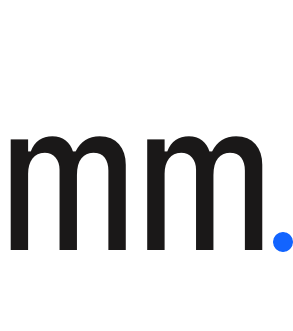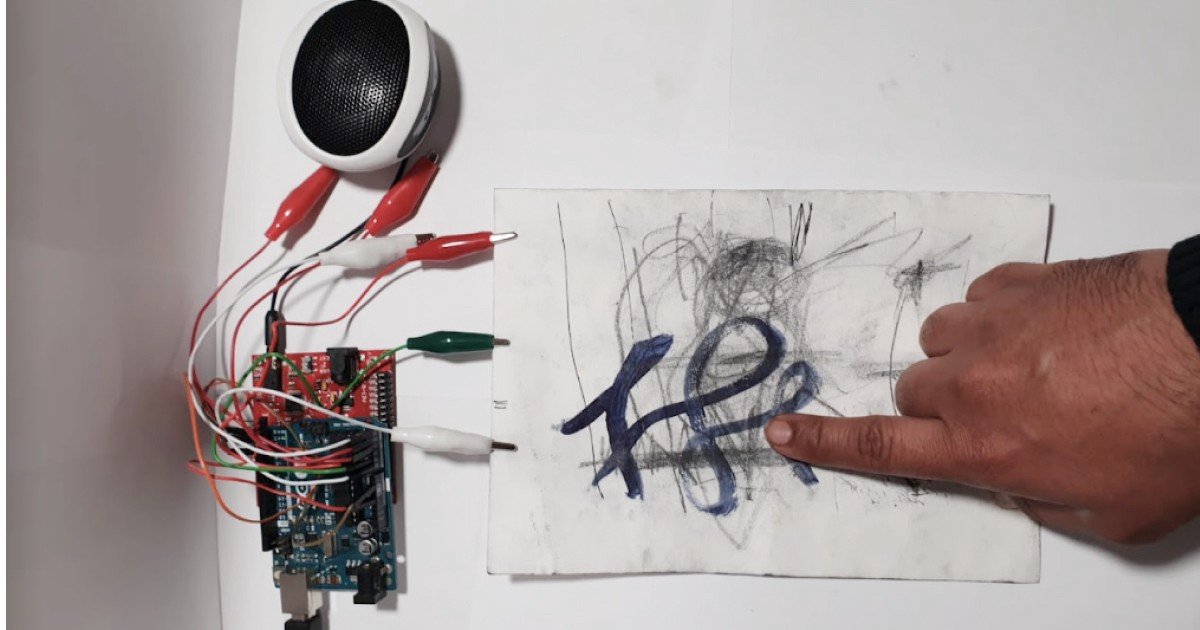Sonic Sketches And Artistic Acoustics:
Investigating The Role Of Music In Designing For Play
PARTNERS
BBC Sounds x UAL
RESEARCH METHODS
Affinity mapping
Design ethnography
Crazy 8 ideation
Graffiti wall
OUTCOME
Soundscapes- An immersive workshop
IOT-enabled canvas
BBC sound mobile application
TOOLS
Figma
Leap motion sensor
Miro
P5.js
In A Nutshell
'Drawing Soundscapes' explores the idea of augmenting the activity of drawing and invites people to reflect on the relationship between sound and creativity.
Research Goals
Investigate the role of sound as the primary interface for influencing artistic outputs and creating engaging experiences.
How might we design a multisensory experience incorporating drawing within an acoustically tuned environment?
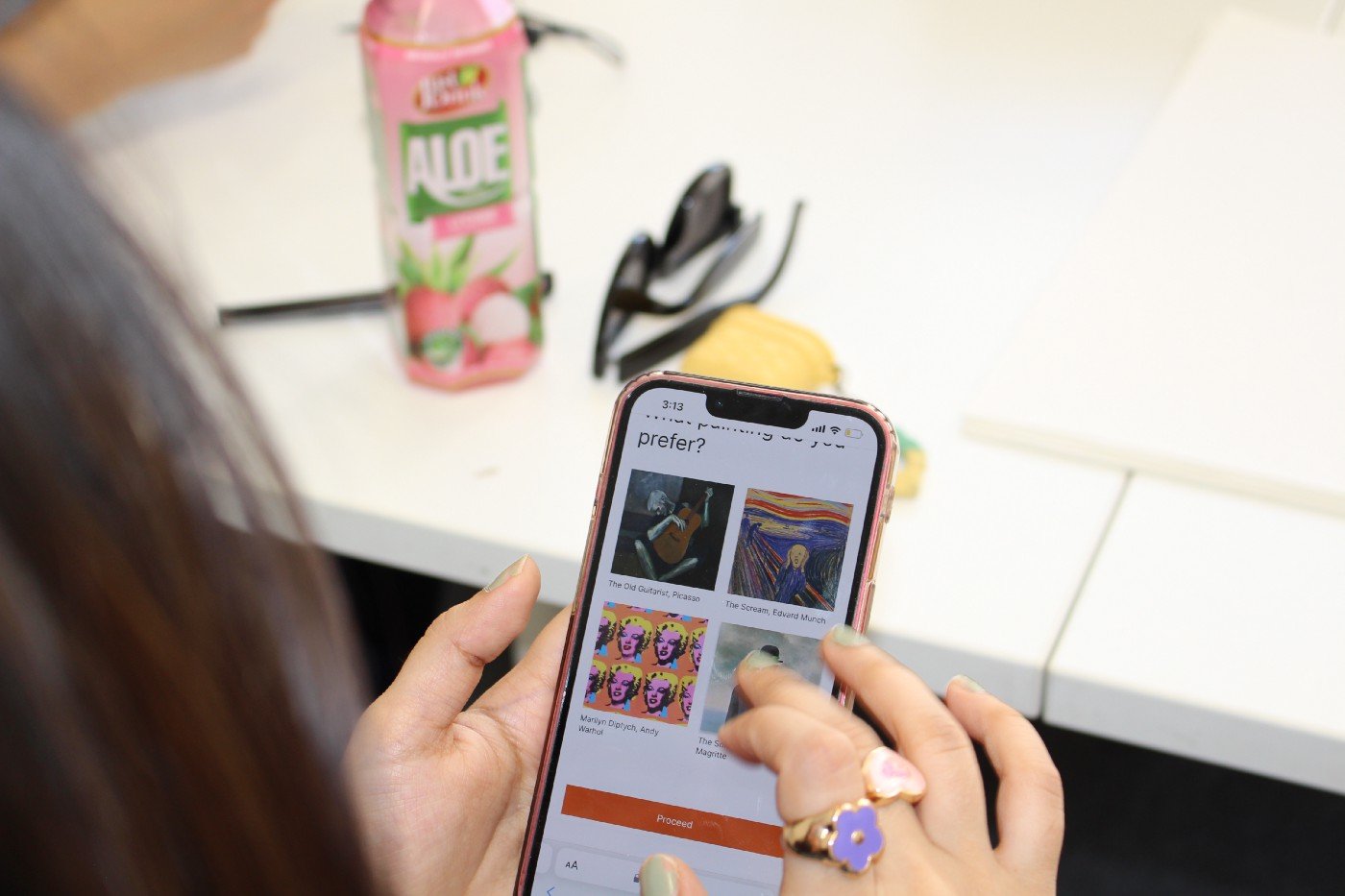
Fig. 1: Participant taking the soundscape quiz
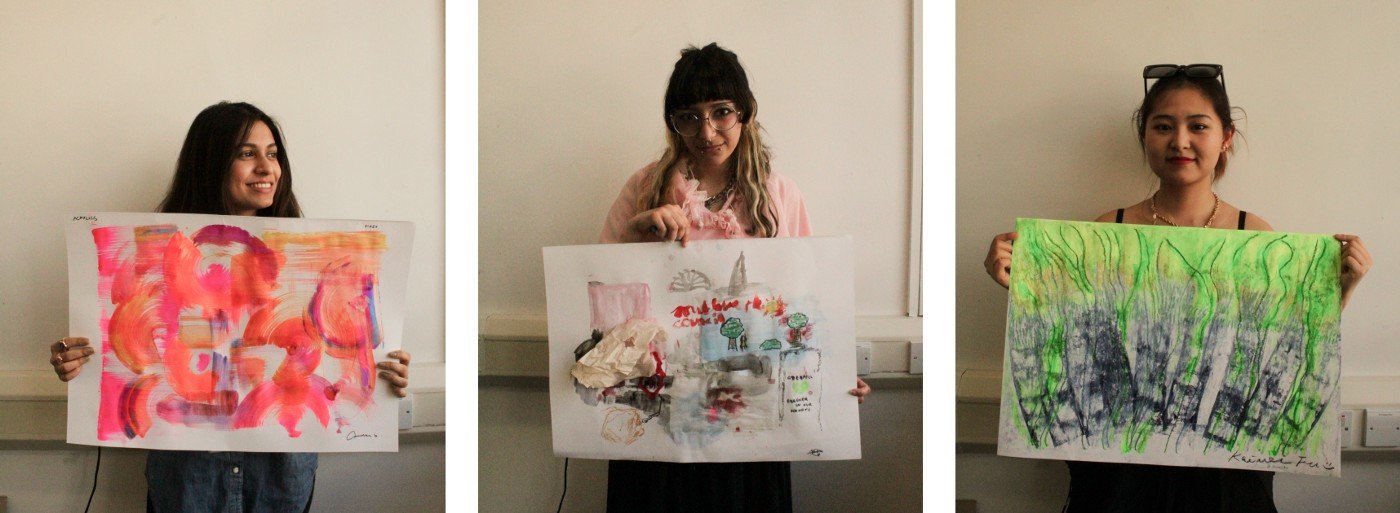
Fig. 2, 3, 4: Snapshots of participants with their artwork that they made using the soundscapes
Generative Research
The following generative research methods were used to generate ideas
-
• The Crazy 8 exercise was employed to generate a wide range of quick and diverse ideas within a short timeframe.
• This brainstorming technique allowed us to explore different concepts and perspectives related to sound, drawing, and play.
-
• The Wizard of Oz method was used to simulate an interactive experience.
• We could observe and analyse participants' reactions and behaviours in real-time by manually controlling certain aspects of the workshop.
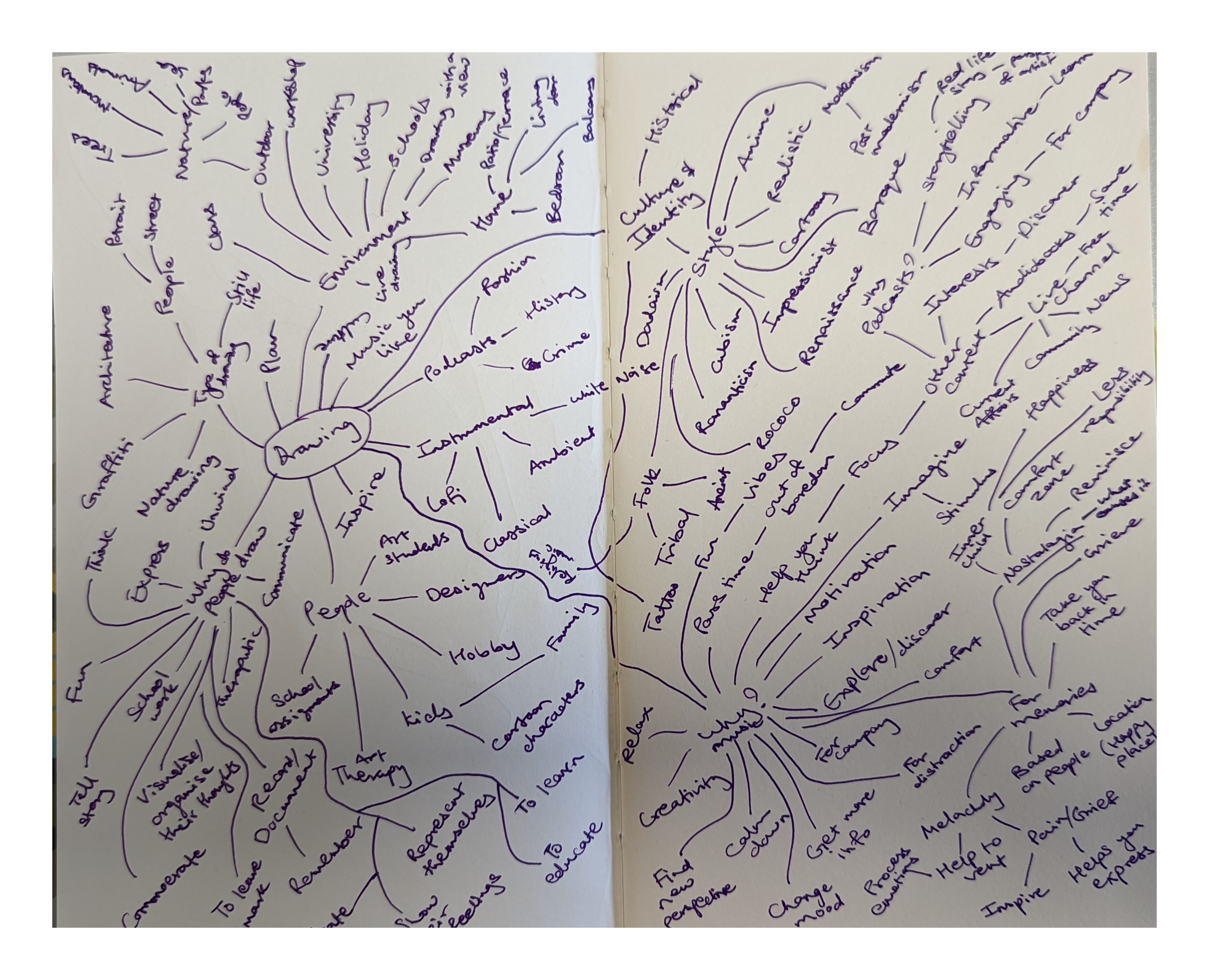
Fig. 5: Mind mapping to visually organise and connect different ideas, concepts, and insights

Fig. 6: The Wizard of Oz method to create a simulated interactive experience
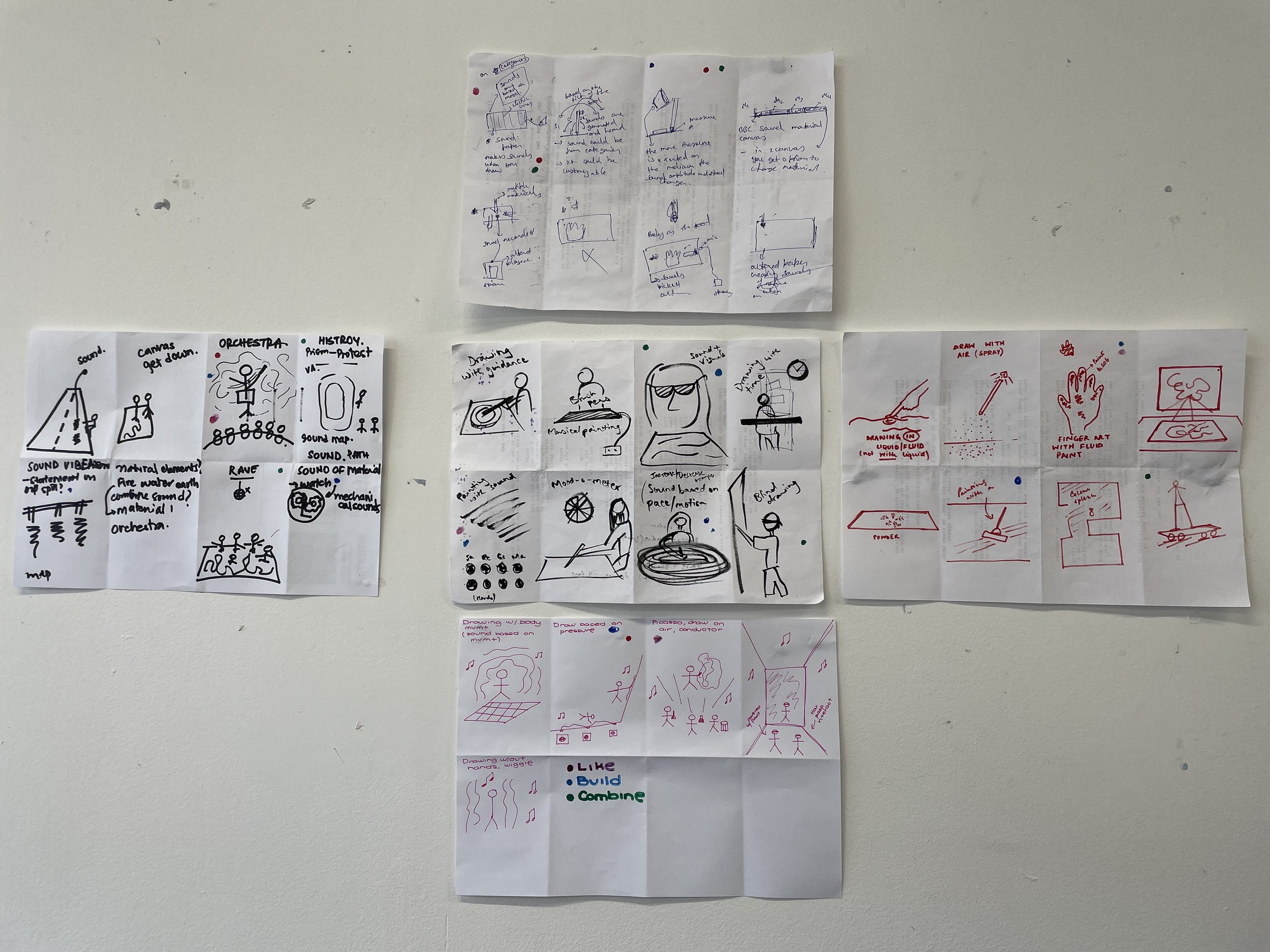
Fig. 7: Crazy 8 to explore different concepts within a short timeframe
Interviews
After conducting and synthesising our exploratory research, we realised the critical component that needed to be added was the element of play. Acknowledging this gap, we aimed to reorient our design-led research to foster experimentation, creativity, and co-creation.
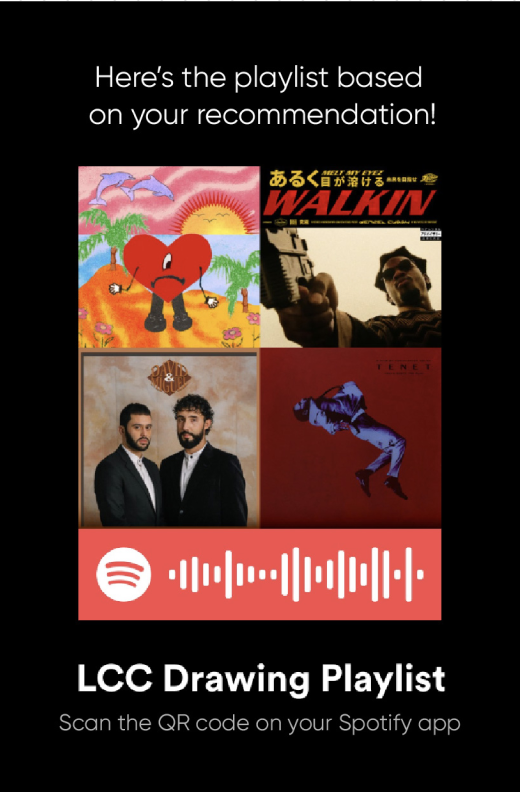
Fig. 8: Crowdsourced Playlist

Fig. 9: Analysis of the graffiti wall experiment to identify themes
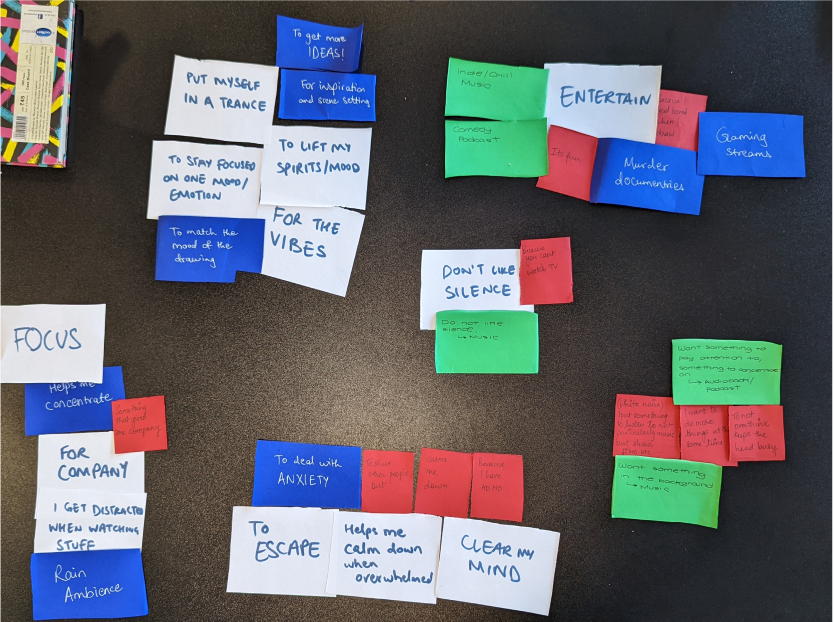
Fig. 10: Affinity diagram to organise the information gathered during the graffiti wall experiment
Co-design Workshop
Material Exploration
The workshop involved design and art students who had previously participated in our initial study. We selected five songs from their shared graffiti wall to create a curated playlist. Participants wore headphones to collectively listen to the music while working on a 20-foot-long paper scroll.
-
• Participants primarily focused on their own drawings, as no explicit instructions were given for collaboration.
• Observations revealed changes in participants' body language and artistic style in response to the pace and genre of each song.
• One participant said the experience felt like they were in a "Silent-disco" and "loved being collectively alone".
• This suggests a unique sense of shared solitude, where the collective experience enhances individual creativity.
-
We realised a key component was missing which was the element of play. Recognising this gap, we aimed to reorient our design-led research to foster experimentation, creativity, and co-creation.
“Collective experiences enhances individual creativity.”
Designing For Play
Taking cues from our previous workshop, we sought to incorporate the notion of play and make the experience more experimental. We recruited five participants, ages 4 to 7, and conducted the workshop outdoors using the same 20-foot paper scroll.
-
• The participants demonstrated a fearless approach, unafraid of getting their hands dirty while using drawing materials.
• Their enthusiastic use of various drawing materials showed their eagerness to experiment and explore different artistic techniques.
• Furthermore, the participants actively engaged in collaborative drawing, often joining forces with their parents to create shared artwork.

Fig.11,12,13 : Participants aged 4-7 use different materials to explore art and music
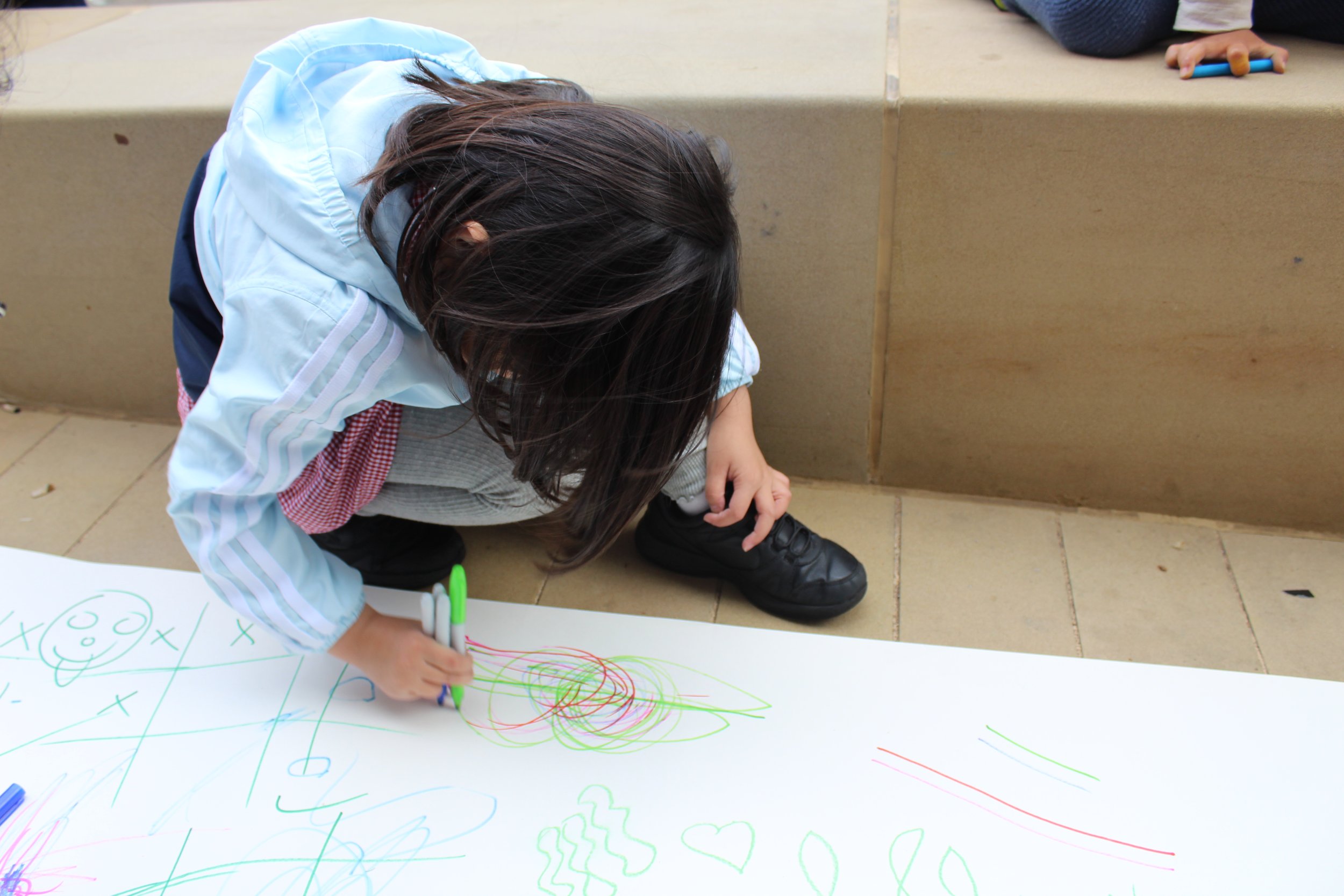
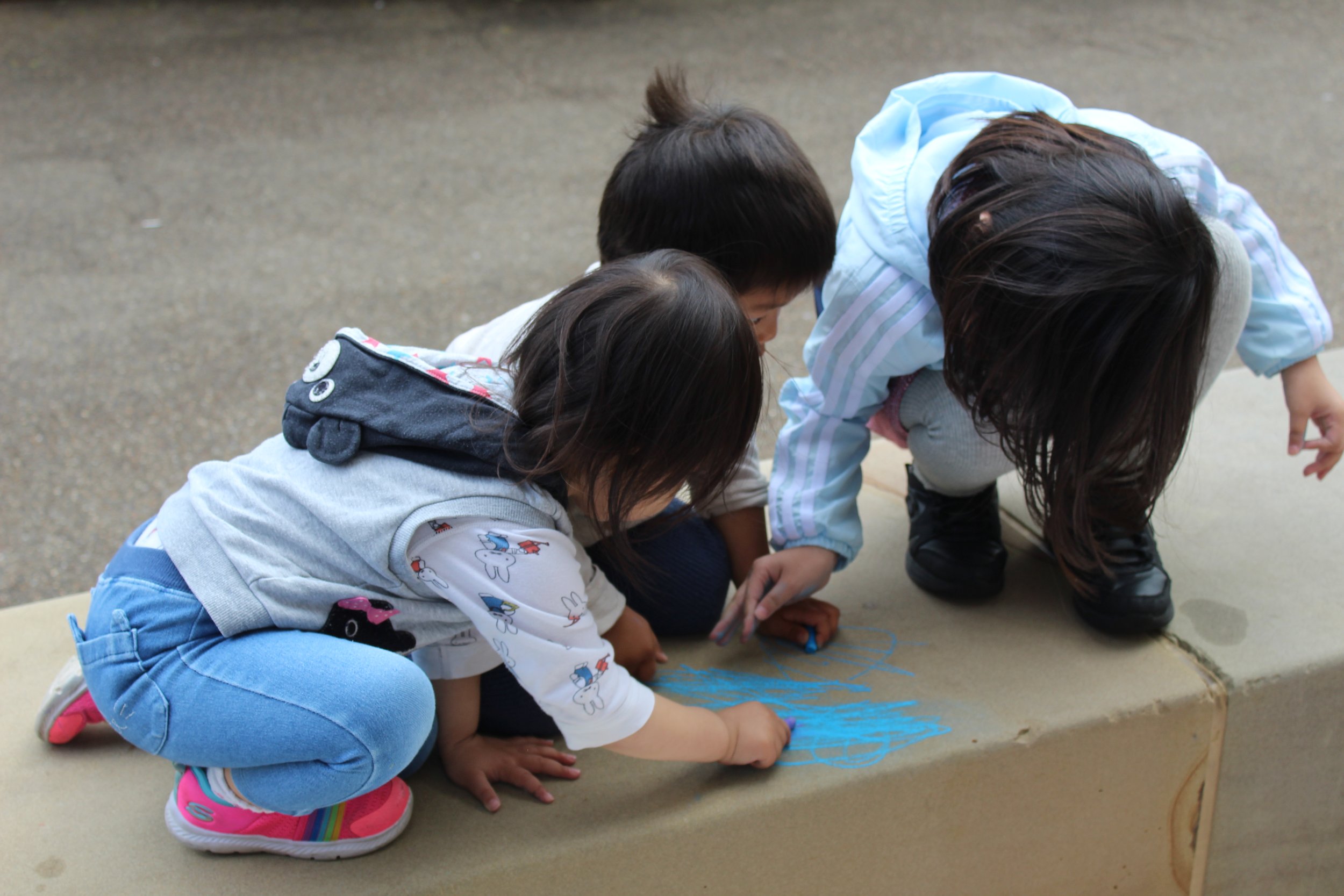
IoT-Enabled Canvas
Canvas Got A Digital Makeover
Inspired by Marc Teyssier's Skin-on Interface, We developed our version of a digital canvas using a similar kinesthetic approach. We experimented with graphite circuits using conductive paint, tape, and graphite pencils. The graphite paper was connected to an Arduino and speakers to reproduce sounds on touch.
The fabrication process is relatively simple and can be replicable using open-source and open hardware.
Fig. 14, 15: The process of making the IoT canvas and exploring conductive materials
Fig .16: A group of participants exploring and playing sounds on the IoT canvas
Soundscapes
The culmination of our research led us to design a last workshop that aimed to evoke diverse moods within the participants and translate those emotions into their artistic expressions.
-
We devised an engaging quiz that determined each participant's soundscape and corresponding mood to achieve this. We carefully curated four distinct moods: Calm, Energetic, Happy, and Sad, each accompanied by its own unique soundscape. The quiz results served as a guide, allowing participants to delve into the mood that resonated most with them.
-
The workshop provided approximately 20 minutes of immersive creative exploration for each participant. However, it was fascinating to observe that some participants continued exploring additional soundscapes and continued working on their canvas even after their soundscape was over. This demonstrated a profound engagement and commitment to their artistic endeavours, extending beyond the workshop's designated time frame.
You can take the quiz here

Fig. 17: Participant taking the soundscape quiz

Fig. 18, 19, 20: Snapshots of participants with their artwork that they made using the soundscapes
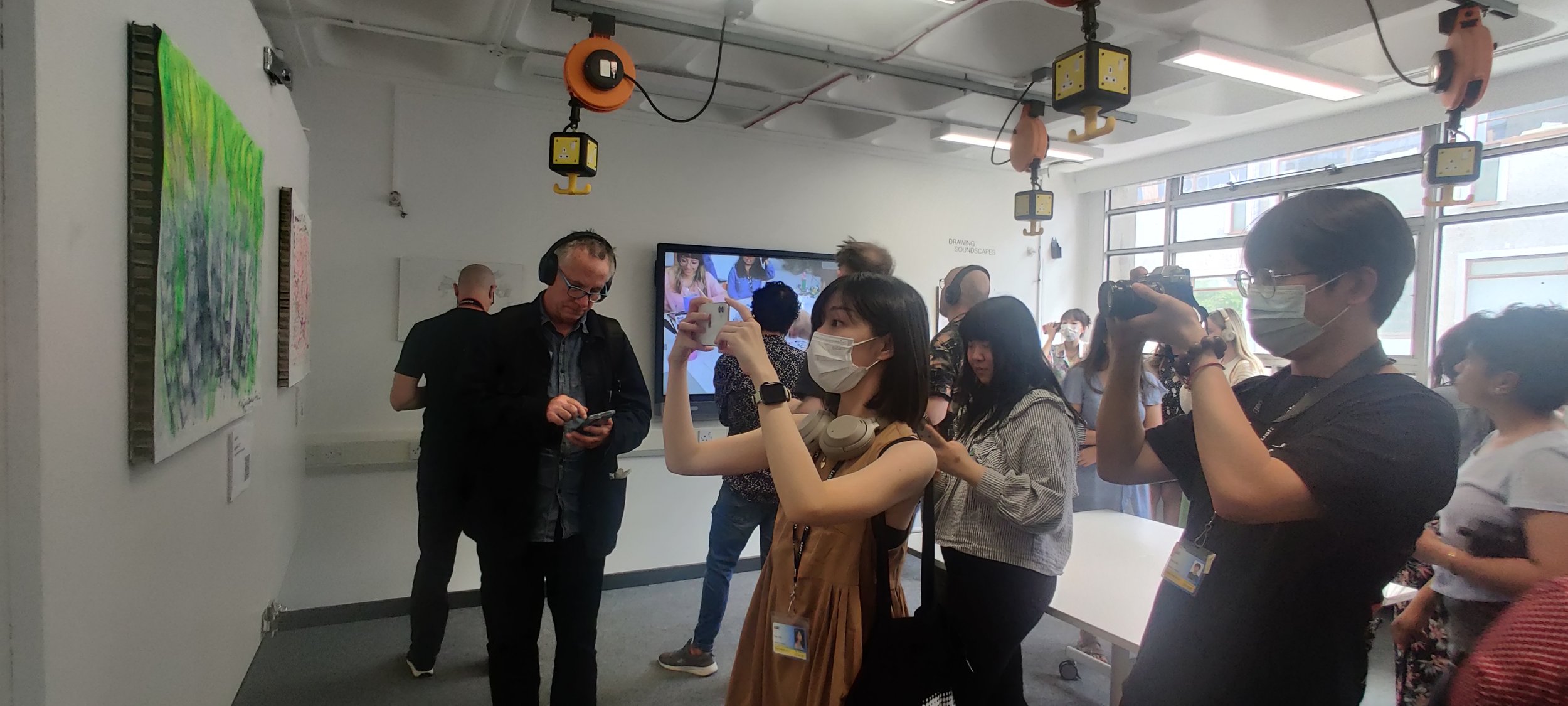

Fig. 21,22: People attending the exhibition while listening to the soundscapes
Learnings
-
During our project, we approached design as a means to gather insights, and the workshops became our playground. This practice helped us cultivate new ideas and iterate them faster. We approached prototypes as physical hypotheses that we were testing. However, as we journeyed forward, we realised the importance of striking a balance, avoiding the trap of over-testing that could potentially overshadow our final vision.
-
Embracing failures as stepping stones was a pivotal part of our journey. Negative feedback might sting at first, but in hindsight, those "didn't-quite-work-as-expected" moments fueled us to fine-tune our approach and re-strategise for the better.
The squad : Kiesha Mundin, Lara Mendoca, Leon Zsunner, Mita Chavan, Malavika Mahajan, Pranjal Choudhary.
